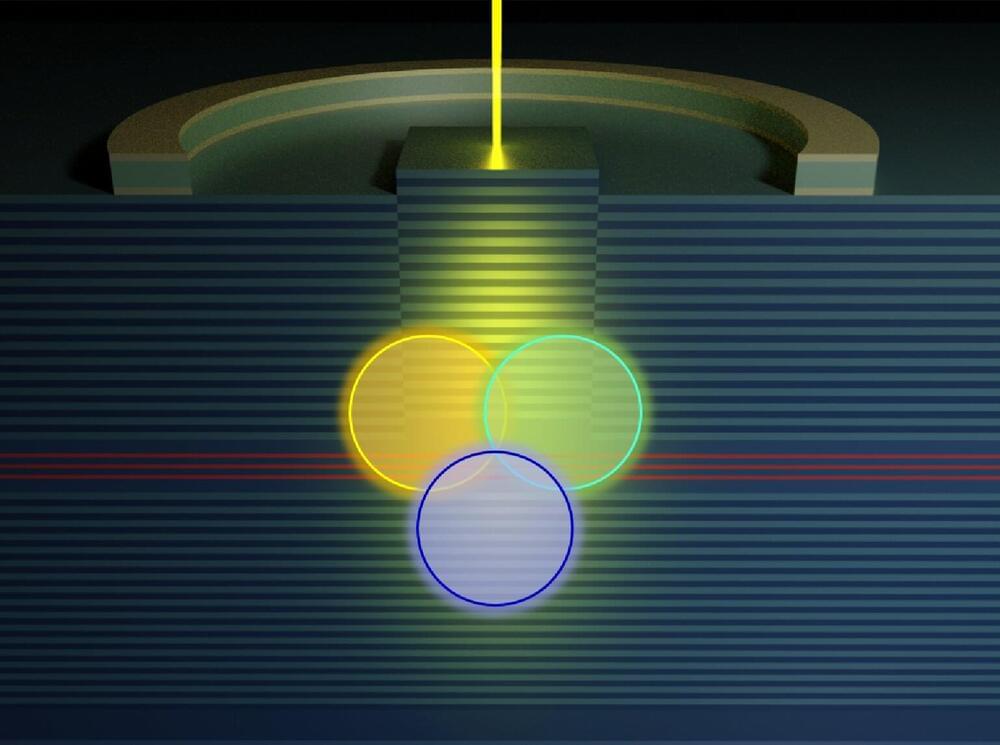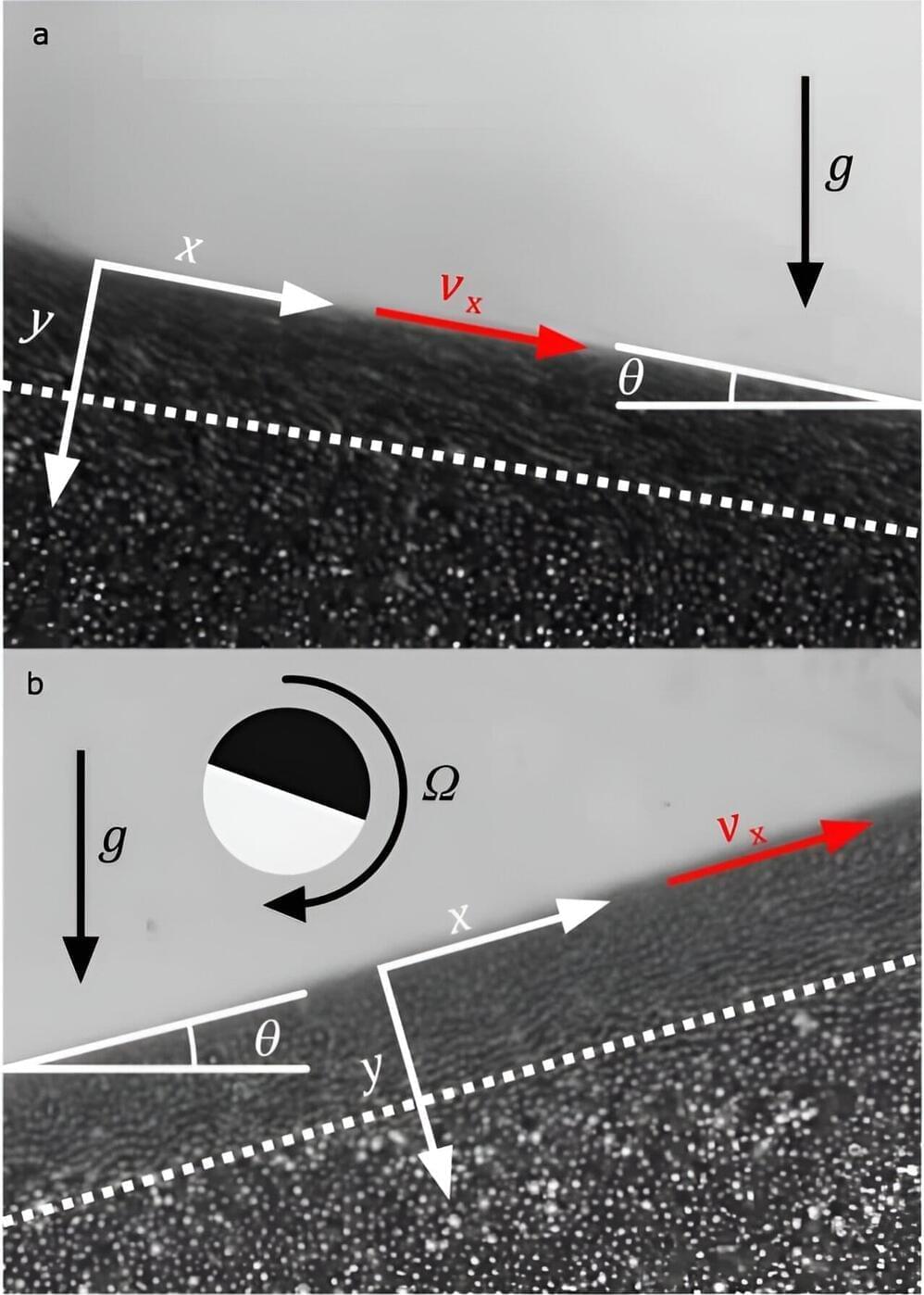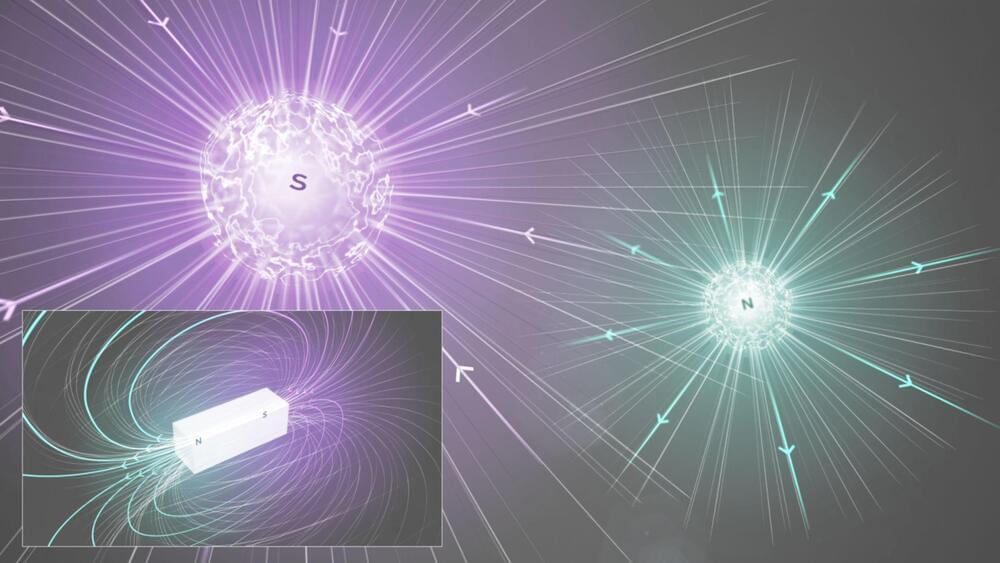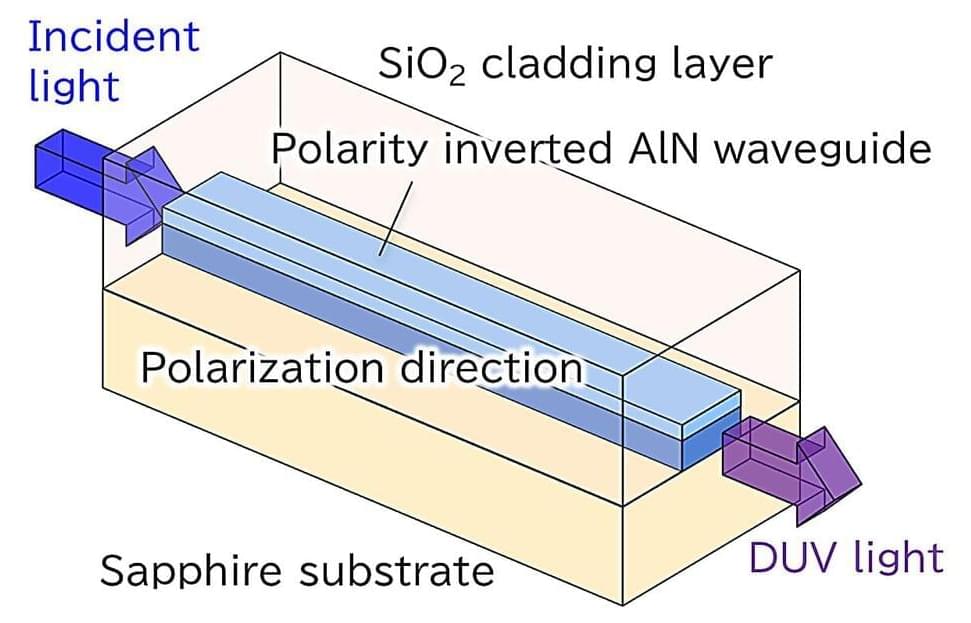
In a paper published today (Sept. 18) in Nature Communications, researchers from the Paul-Drude-Institut in Berlin, Germany, and the Instituto Balseiro in Bariloche, Argentina, demonstrated that the mixing of confined quantum fluids of light and GHz sound leads to the emergence of an elusive phonoriton quasi-particle—in part a quantum of light (photon), a quantum of sound (phonon) and a semiconductor exciton. This discovery opens a novel way to coherently convert information between optical and microwave domains, bringing potential benefits to the fields of photonics, optomechanics and optical communication technologies.
The research team’s work draws inspiration from an everyday phenomenon: the transfer of energy between two coupled oscillators, such as, for instance, two pendulums connected by a spring. Under specific coupling conditions, known as the strong-coupling (SC) regime, energy continuously oscillates between the two pendulums, which are no longer independent, as their frequencies and decay rates are not those of the uncoupled ones. The oscillators can also be photonic or electronic quantum states: the SC regime, in this case, is fundamental for quantum state control and swapping.
In the above example, the two pendulums are assumed to have the same frequency, i.e., in resonance. However, hybrid quantum systems require coherent information transfer between oscillators with largely dissimilar frequencies. Here, one important example is in networks of quantum computers. While the most promising quantum computers operate with microwave qubits (i.e., at few GHz), quantum information is efficiently transferred using near infrared photons (100ds THz).


















